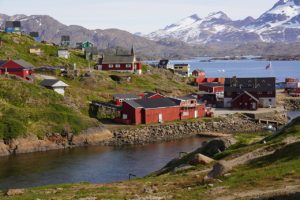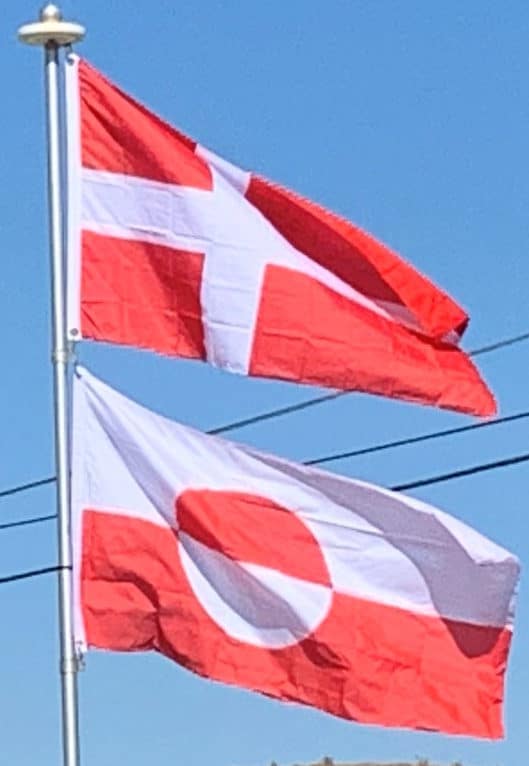In 1950, Denmark agreed to allow the US to reestablish Thule Air Base in Greenland; it was greatly expanded between 1951 and 1953 as part of a unified NATO Cold War defense strategy. The local population of three nearby villages was moved more than 100 kilometers (62 mi) away in the winter. The United States tried to construct a subterranean network of secret nuclear missile launch sites in the Greenlandic ice cap, named Project Iceworm. It managed this project from Camp Century from 1960 to 1966 before abandoning it as unworkable. The Danish government did not become aware of the program’s mission until 1997, when they discovered it while looking for records related to the crash of a nuclear-equipped B-52 bomber at Thule in 1968.
With the 1953 Danish constitution, Greenland’s colonial status ended as the island was incorporated into the Danish realm as an amt (county). Danish citizenship was extended to Greenlanders. Danish policies toward Greenland consisted of a strategy of cultural assimilation — or de-Greenlandification. During this period, the Danish government promoted the exclusive use of the Danish language in official matters, and required Greenlanders to go to Denmark for their post-secondary education. Many Greenlandic children grew up in boarding schools in southern Denmark, and a number lost their cultural ties to Greenland. While the policies “succeeded” in the sense of shifting Greenlanders from being primarily subsistence hunters into being urbanized wage earners, the Greenlandic elite began to reassert a Greenlandic cultural identity. A movement developed in favor of independence, reaching its peak in the 1970s. As a consequence of political complications in relation to Denmark’s entry into the European Common Market in 1972, Denmark began to seek a different status for Greenland, resulting in the Home Rule Act of 1979.
This gave Greenland limited autonomy with its own legislature taking control of some internal policies, while the Parliament of Denmark maintained full control of external policies, security, and natural resources. The law came into effect on 1 May 1979. The Queen of Denmark, Margrethe II, remains Greenland’s head of state. In 1985, Greenland left the European Economic Community (EEC) upon achieving self-rule, as it did not agree with the EEC’s commercial fishing regulations and an EEC ban on seal skin products. Greenland voters approved a referendum on greater autonomy on 25 November 2008. According to one study, the 2008 vote created what “can be seen as a system between home rule and full independence.”

On 21 June 2009, Greenland gained self-rule with provisions for assuming responsibility for self-government of judicial affairs, policing, and natural resources. Also, Greenlanders were recognized as a separate people under international law. Denmark maintains control of foreign affairs and defense matters. Denmark upholds the annual block grant of 3.2 billion Danish kroner, but as Greenland begins to collect revenues of its natural resources, the grant will gradually be diminished. This is generally considered to be a step toward eventual full independence from Denmark. Greenlandic was declared the sole official language of Greenland at the historic ceremony.
Geography:
Greenland is the world’s largest non-continental island and the third largest area in North America after Canada and the United States. Greenland is bordered by the Arctic Ocean to the north, the Greenland Sea to the east, the North Atlantic Ocean to the southeast, the Davis Strait to the southwest, Baffin Bay to the west, the Nares Strait and Lincoln Sea to the northwest. The nearest countries are Canada, to the west and southwest across Nares Strait and Baffin Bay; and Iceland, southeast of Greenland in the Atlantic Ocean. Greenland also contains the world’s largest national park, and it is the largest dependent territory by area in the world, as well as the fourth largest country subdivision in the world, after Sakha Republic in Russia, Australia’s state of Western Australia, and Russia’s Krasnoyarsk Krai, and the largest in North America.
